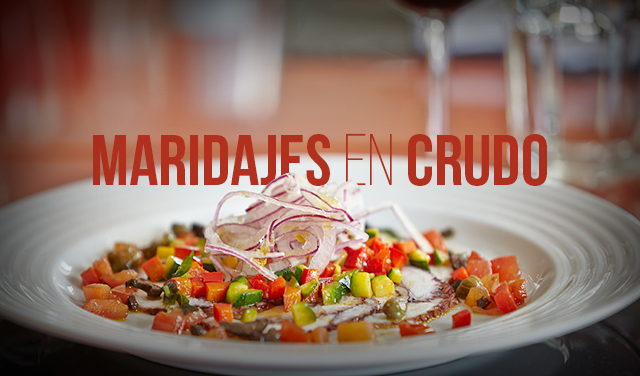[Raw] Pairings

But let's not forget that before these oriental delights in Europe we already enjoyed a few classics: steak tartare, Italian carpaccio and of course, the classic salad.
Tartares
- The great classic is the fillet steak tartare, whose main ingredient is raw beef mince, seasoned with capers, onions, shallots, dill and parsley.
- Fish can also be prepared this way. Salmon and tuna are the common options but they can also be made with oysters, sea bream, sea bass and even prawns.
Carpaccios
- Did you know the Carpaccio recipe was created in Venice in 1950? The basic principle is thin slices of raw ingredients arranged on a plate and drizzled with lemon juice and olive oil, with pine nuts, capers and parmesan chips sprinkled on top.
- Originally, Carpaccio was made only with beef fillets cut into very thin slices. The recipe has evolved so that today it is prepared with any fish, fruit or vegetables. The only condition is that you must leave the Carpaccio in its marinade for a few hours in the refrigerator.
- Other dishes you might consider similar would be those where the meat or fish is "cooked" without heat, such as ceviche (by marinating with lemon and lime juice) or desalted and flaked cod or anchovies.
Best [raw] pairings
- Raw foods barely acquire the taste of other ingredients so the sauces, dressings and marinades that we will use to "cook them" will determine the wine we propose when pairing.
- Dry or fruity white wines, and also light rosés are the best allies to accompany salads and vegetables. [For dressings and vinaigrettes always use citrus juice or light vinegar if you want a harmonious pairing].
- These types of wines go perfectly with seafood dishes as they respect their delicacy. A good Riesling with oyster tartare can be exquisite!
- Tuna, salmon and other oily fish, fattier than other white fish, accept young, light red wines served slightly cooler [around 14 º C].
- What about meat? Without heat and cooking and generally being very lean meat we do not have the juices released by cooking or the fat to soften the tannins of powerful red wines. So, as surprising as it may seem, it is better to accompany it with fruity white wines.
The proof of the pudding is in the tasting: the combinations are endless. Creativity First!
